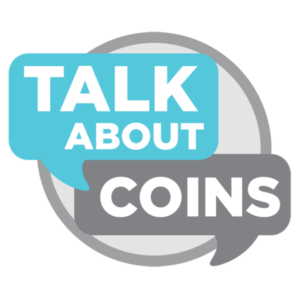Have you ever found a coin that was shinier than normal? It was almost reflective like a mirror? You might have found a proof! You might be asking yourself, what is a coin proof?
What is a coin proof
A proof refers to a process in which coins are made. It does not refer to the condition of the coin. Coin proofs started as an early production version of a coin. They were also created to check the accuracy of coin dies. Proofs these days get struck in larger numbers for collectors. The United States mints proof coins each and every year. The US is not alone in this. Nearly every single country issues proof coinage from their mints!

How are proof coins made
Proofs are struck using special dies on polished planchets. Dies used to make proof coins get treated with special chemicals. The chemicals keep the dies sharp and gives the coin a striking image with great details. The fields of the coin have a mirror-like appearance. Most proofs are double struck with extremely high pressure. This gives the coin much finer details than a single business strike coin. After being struck the proofs get handled one by one. Business strike coins fly off the assembly line into a bin with no extra care.
What is a proof coin and how to tell
A proof will instantly be noticeable. They are the finest quality coin produced by a mint. When looking through your coins, look for very reflective coins. The blanks are struck twice giving the coin striking detail. The rim of the coin is higher than usual. A proof’s background has very high contrast. It will be almost as reflective as a mirror.

Where to get coin proofs
Most proof coins are included in a yearly set. Each set includes a single example of each coin issued that year. A 2019 set would show a penny, a nickel, a dime, a quarter, a half dollar and a golden $1 coin. The mint also produces silver and gold bullion proofs.
Are proof coins legal tender
You can spend proofs just like any coin. They can be used anywhere as payment. They could even be received in change or in coin rolls from the bank! I would advise against spending these coins. Proofs fetch a premium price to many collectors. Some proofs can sell for thousands of dollars if kept in good condition. Many proof coins are later put in holders using a professional grading service such as PCGS, NGC. This will keep the proof coin sonically sealed in a hard plastic holder. Having a proof graded will prevent damage from the elements. It will also prevent a non collector picking the coin up and spending it!
Proof coins in circulation
Proof coins can make their way into circulation. They most likely ended up there on accident. Let’s say someone who doesn’t know anything about coins needs money. They might just hand the proofs to the bank without checking to see what they’re worth. Proof coins have also ended up in circulation through theft. Unless you know who the coins came from, it’s impossible to return them to the rightful owner. If you do not know the original owner, hold on to them for yourself. Keep them safe and in good condition!
Proof coins ended up in circulation during the 2019 National Coin week! This was an event all over the country for coin collectors. They grouped up and put tons of collectible coins back into circulation. This event was held to gain interest with a younger group of people. It was an attempt to get them interested in finding old coins! I’m sure many coin collections were started that week.
Are proof coins worth more
Proof coins are less common than general uncirculated coins. This makes them very collectible. They are seen as more valuable but that’s not always the case. Keep in mind that the term proof is a method of minting the coins. It is not it’s condition. For one type of coin, the proof coin might be worth more than the uncirculated. However, for another type of coin the opposite might be true. If you want to be sure how much your coin is worth, it would be best to get it graded by a professional. These are services such as PCGS, NGC or ANACS! This will give your coin a grade which. That will let you look your coin up and see it’s true value!

